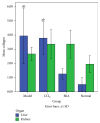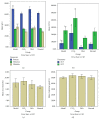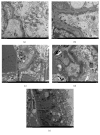An Attempt to Establish a Common Animal Model for Hepatorenal Fibrosis in Rats
- PMID: 28835866
- PMCID: PMC5556604
- DOI: 10.1155/2017/8260508
An Attempt to Establish a Common Animal Model for Hepatorenal Fibrosis in Rats
Abstract
It is already a proven fact that there exists a relationship between CLD (chronic liver disease) and kidney disease but still there is no available combined animal model of liver and kidney fibrosis on the same animal. An animal model is one of the important research tools in the field of medical science because it is important to build a model that can simulate the disease condition so that the particular disease can be studied. Therefore, the aim of this study is to build a less expensive, less time consuming, and reproducible model of hepatorenal fibrosis on rats. We administered combined intraperitoneal injection of CCl4 (Carbon Tetrachloride) and BSA (Bovine Serum Albumin) on a female Wistar rats. At the end, the liver and kidney tissues were examined under microscope to see whether we were successful in establishing the model or not. The results show that liver fibrosis was marked but the changes on the kidneys were mild. In this study, we were able to induce significant fibrosis in the liver and early stages of fibrosis in the kidneys. The result also demonstrated that the addition of BSA conferred a liver protective effect against CCl4 induced hepatotoxicity, whereas combination of CCl4 and BSA proved to be detrimental for kidneys.
Figures







References
-
- Endo Y., Matsushita H., Nozawa Y., Nishikage S., Matsuya S., Hara M. Glomerulonephritis associated with liver cirrhosis. Pathology International. 1983;33(2):333–346. - PubMed
-
- Gawrylewski A. The trouble with animal models. TheScientist, July 2007, http://www.thescientist.com/?articles.view/articleNo/25184/title/The-Tro...
LinkOut - more resources
Full Text Sources
Other Literature Sources

